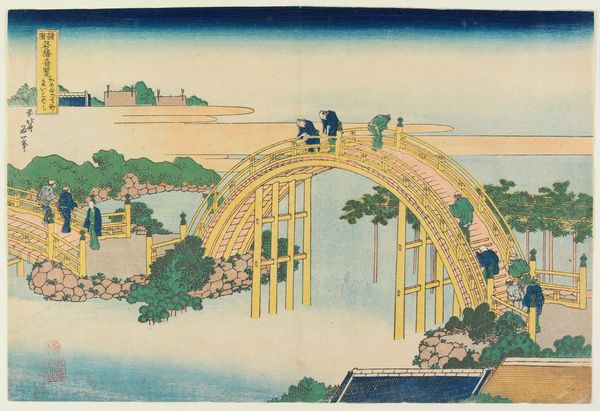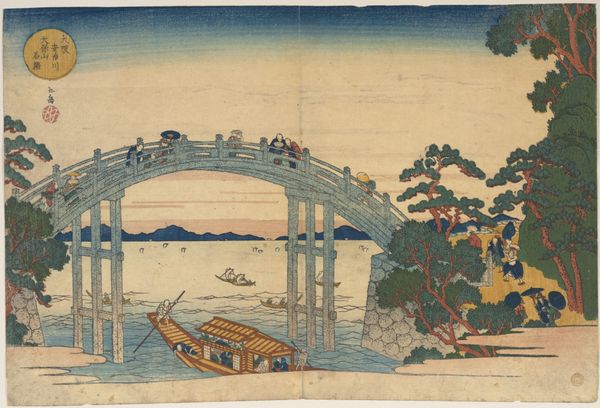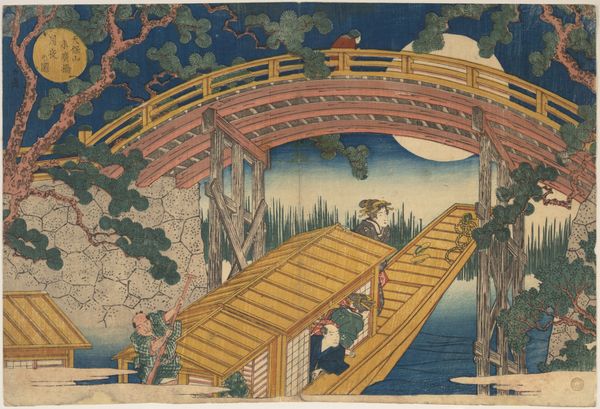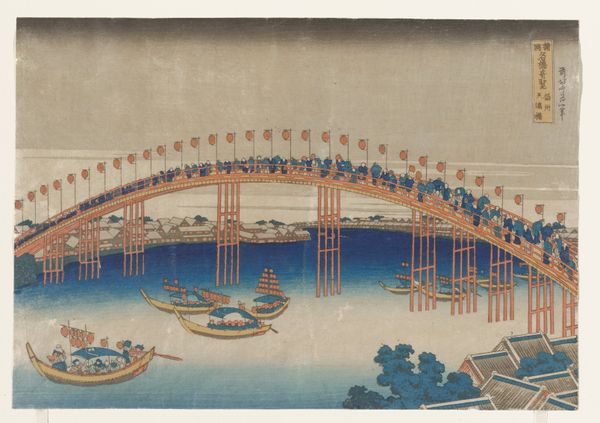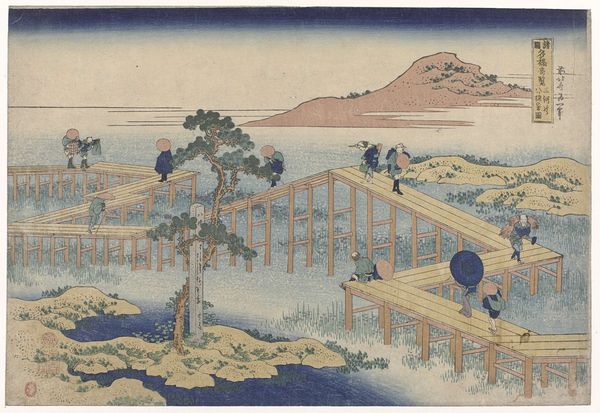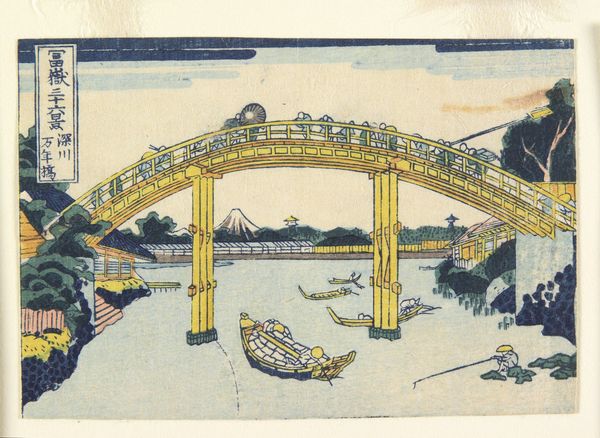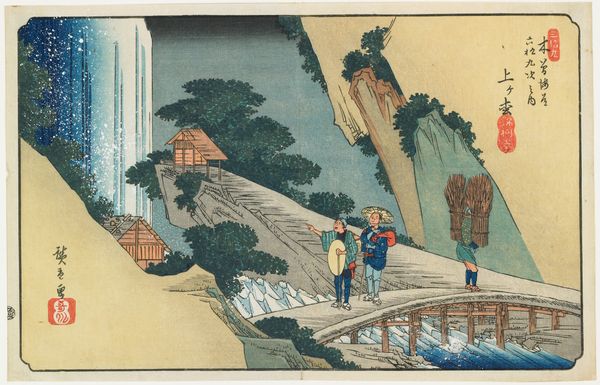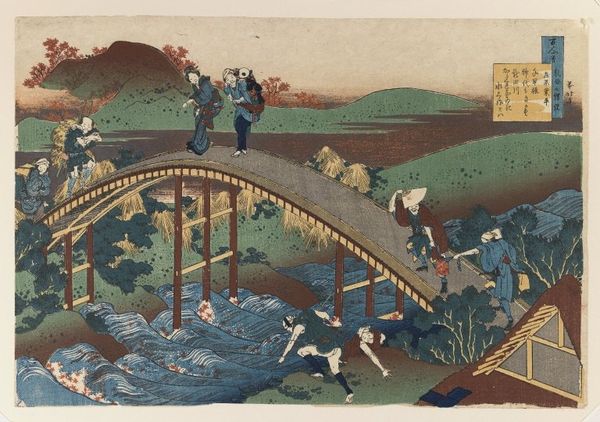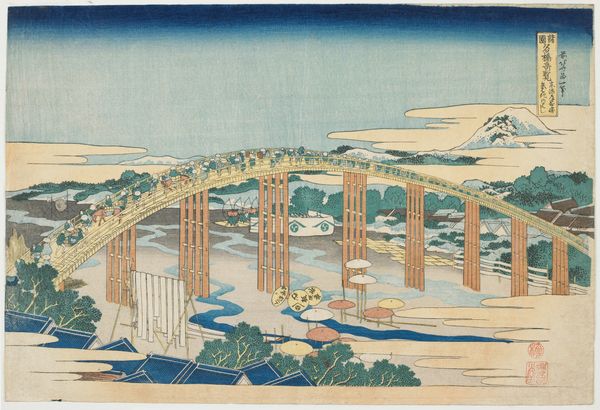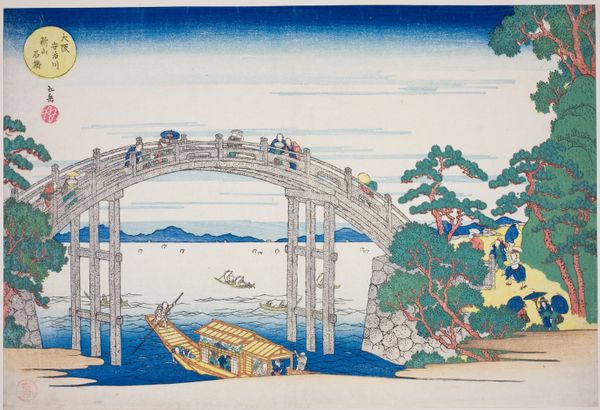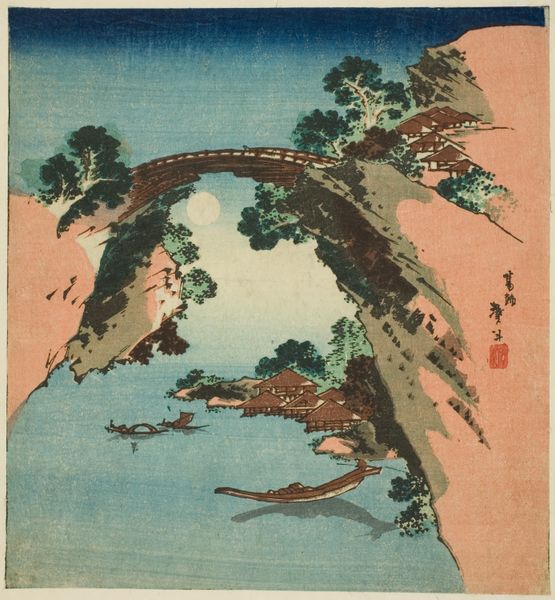
print, watercolor, ink, woodblock-print
# print
#
asian-art
#
landscape
#
ukiyo-e
#
japan
#
watercolor
#
ink
#
woodblock-print
#
cityscape
Dimensions: 10 1/16 × 15 in. (25.6 × 38.1 cm) (image, sheet, horizontal ōban)
Copyright: Public Domain
This print, The Drum Bridge at Kameido Tenjin Shrine, was made by Katsushika Hokusai sometime in the 1830s using woodblock printing, a quintessential Japanese technique. What I find fascinating is how the medium itself shapes our experience of the scene. Look at the flat planes of color, the rhythmic lines defining the bridge's structure, and the figures traversing it. Each element is meticulously carved into the wood, then inked and pressed onto paper. This process demands a certain level of abstraction and simplification, encouraging us to focus on the essential forms and patterns. Hokusai masterfully exploits the inherent qualities of the woodblock to create a sense of depth and atmosphere. Notice how the bridge seems to float above the water, its reflection subtly suggested by the negative space. There is also a social dimension to this work. Woodblock printing was a commercial enterprise, and its relative affordability allowed for widespread distribution of images, thus shaping popular taste. So, next time you encounter a woodblock print, remember that the materials, making, and social context are all crucial to its full meaning.
Comments
minneapolisinstituteofart almost 2 years ago
⋮
Whereas Hokusai’s series on waterfalls may have sprung from a Japanese reverence for natural phenomena, his series on bridges is a cataloguing of different bridge types, from temporary examples to solidly built, permanent structures. Most of the bridges in the series actually existed, but some were legendary and known to Hokusai through literature and folklore. A set of twelve prints likely was intended, although only eleven are known. Two are on view here. This bridge is one of two dramatic “drum” bridges at Kameido Tenjin Shrine in Edo. Probably inspired by Chinese “moon” bridges, they were dubbed taiko (drum) bridges. The half-circle form made a full circle when reflected in the water, suggesting the shape of a round drum. By showing the bridge from an oblique viewpoint, Hokusai cleverly revealed the topside planking and also the underside and the support pilings.
Join the conversation
Join millions of artists and users on Artera today and experience the ultimate creative platform.
